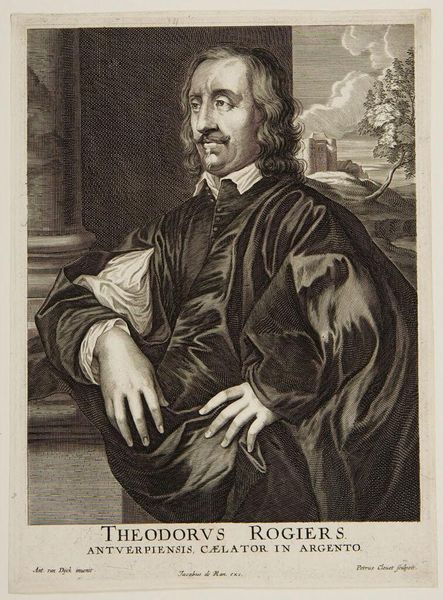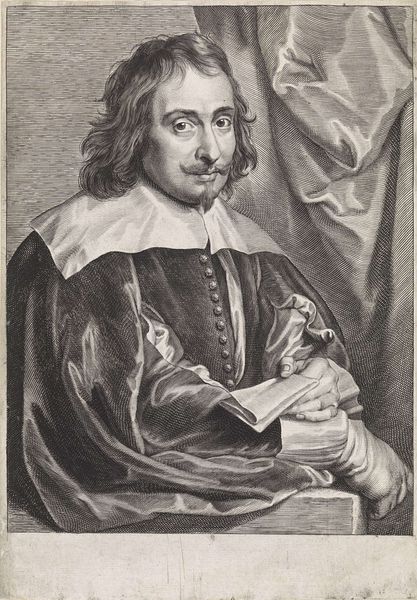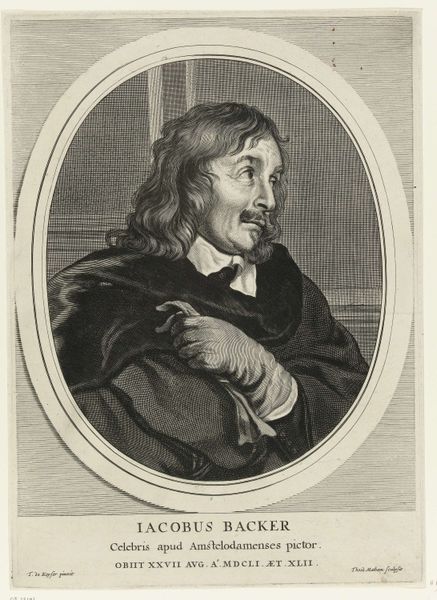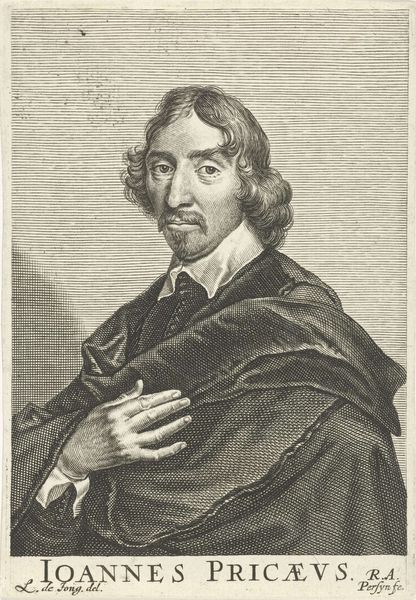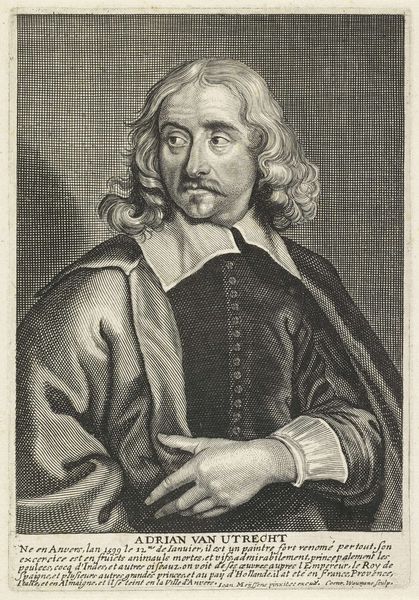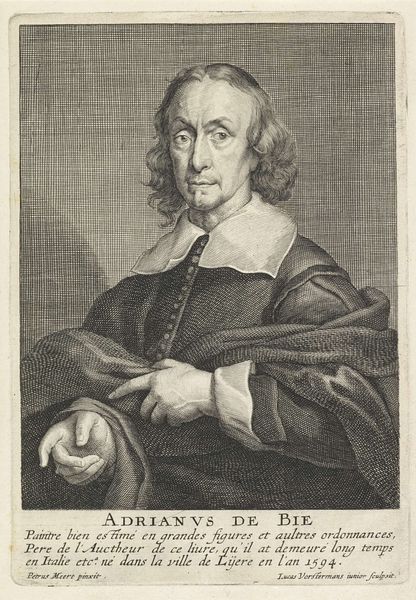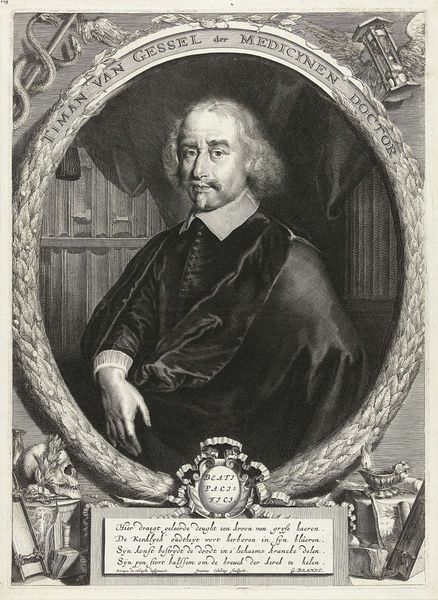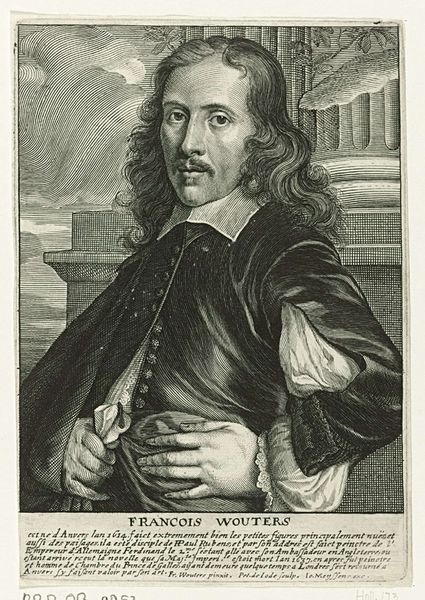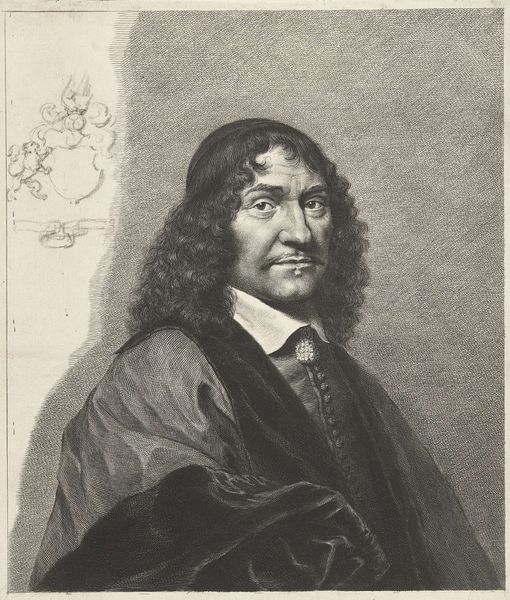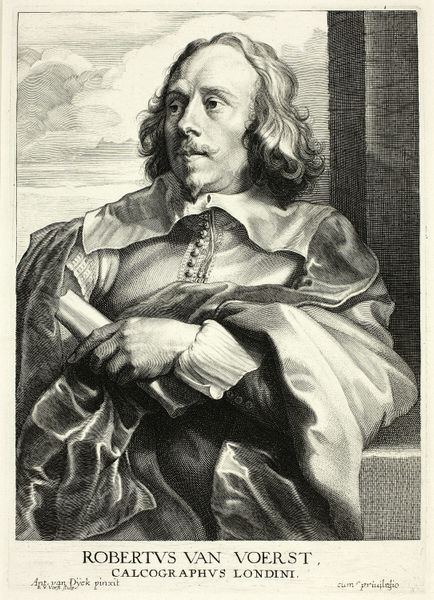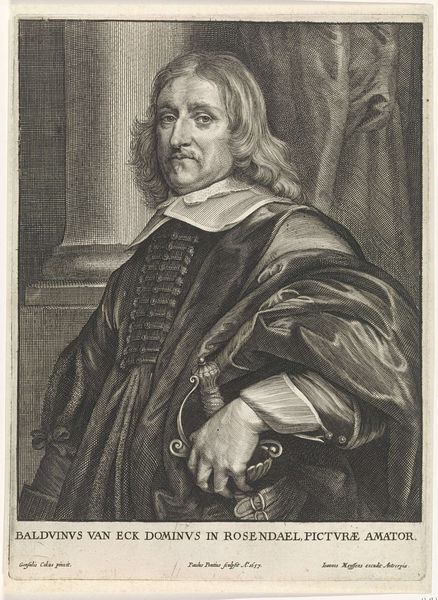
print, engraving
#
portrait
#
baroque
# print
#
old engraving style
#
figuration
#
line
#
northern-renaissance
#
engraving
Dimensions: height 274 mm, width 200 mm
Copyright: Rijks Museum: Open Domain
Curator: This is Petrus Clouwet's "Portret van Theodor Rogiers," dating somewhere between 1639 and 1670. It's an engraving. Editor: There's an almost photographic realism to the face that contrasts with the looser treatment of the garments, giving it an immediate visual tension. I'm also struck by the sitter's gaze. It's contemplative. Curator: Clouwet was working in a Northern Renaissance, almost Baroque style. This was a time of religious and political upheaval. How does the identity of the sitter influence the interpretation of this piece? Theodor Rogiers was a silversmith from Antwerp. Editor: Knowing Rogiers was a silversmith adds an interesting layer. We see the prosperity, of course, in the attire, but it goes beyond mere wealth. The choice to portray him as a man of substance speaks to the rising status of artisans in society. Think about the implications of social mobility on traditional hierarchies. Curator: Absolutely. Consider, too, how prints like this functioned as instruments of reputation. The quality of Clouwet's engraving—the fine lines, the detailed shading—it elevates Rogiers' standing within his profession. He is presenting not just an image, but constructing a legacy. The visual vocabulary employed in rendering Rogiers’ features mirrors strategies deployed across portraiture to define social and intellectual status, creating a subtle tension with traditional aristocratic imagery. Editor: That manipulation is fascinating. It touches upon questions of authorship and the control over one's image and narrative, and that persists even today, with digital media and constructed identities. I do feel that in this piece there is a successful and empowering claim for status, but I find it sad. Do you perceive in the work an elegy or mourning for the past? Curator: I see what you mean. Perhaps that melancholy resonates with the period, the awareness of shifting powers. Ultimately, I think what captures us is how the piece reflects tensions of its time. Editor: And still, in our time, too.
Comments
No comments
Be the first to comment and join the conversation on the ultimate creative platform.
